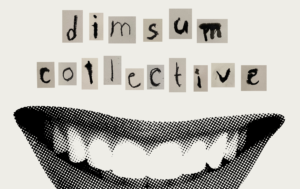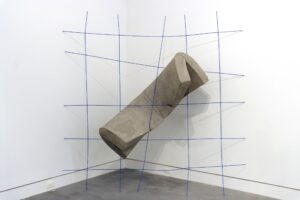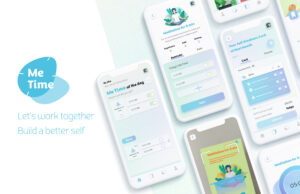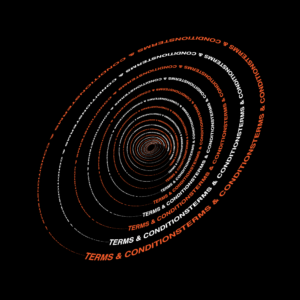BINDING THREADS
Elham Atighi Lorestani

Fashion has always been about telling stories and yet some stories are never told in the design process. All too frequently they are also missing in the clothing we wear. Hidden or neglected stories such as those connected to the experiences of displacement are important. They have value and are part of the identity construction for many people in the 21st century. The clothing we wear is arguably one of the most effective means to convey our personal identity and self-expression to/and with others.
This thesis describes a project that has drawn on the potential of storytelling as a framework for the design process as well as the means for connection and self-expression. A platform has been envisaged and developed that invites people to engage with fashion in a way that enables a designer/researcher to consider, critique and suggest an alternative way of looking at the fashion service and design process that embraces multi-storytelling.
The Baggage that Informs us
You open your eyes, peer through this frame and look. And there you see them all – again – the luggage you have packed is staring back at you. The stuff they hold is refusing to be contained. Your bags are bursting with all of your precious things that resist being contained. And while you (and they) wait for the travel visa to arrive, there are times that you find yourself missing wearing a specific piece of clothing that you have packed. But you cannot open your blue luggage because you have weighed it all so many times. It is a rule; it shouldn’t exceed 24 Kg. You have donated a lot of your things, and yet still you see a pile of clothing stacked in the corner. Looking at it, you feel pain in a part of your heart. Your brain tries to override this emotion, to be logical. “You just have to bring the necessary stuff,” you tell yourself.

The immigration challenges and experiences connected to facilitating and preparing to move in the middle of my master’s studies were focal points that shaped my research. This experience was the starting point for storytelling as a discursive practice.
In my research, I was circling around, three key elements:
- Fashion and clothing as a medium of expression
- Storytelling as the means to reflect a sort through difficult experiences
- The experience moving as a scenario to drive new perspectives

Where my research sits
Storytelling in Fashion
Storytelling is integral to fashion. Explored in many ways and by a wide array of means and mediums, it is applied to address many different contexts, values and aspirations: upholding the current status quo by encouraging individuality and consumption; looking to the possibility of technology; concern for the environment; concern for perspectives outside of the Western, modernist construct. Below I went through more details about how storytelling is been used in fashion by different brands, fashion networks and entertainment industries.

How storytelling is been used in fashion by different brands, fashion networks and entertainment industries
Shifting from My Story + Heuristic Inquiry to Many Stories + Narrative Inquiry
As a relational self, newly immigrant and a designer, the process of heuristic inquiry and self-exploration through material practice enabled the concept of storytelling to emerge in order to connect people with displacement experience. In telling my own story as a person who experienced displacement and transcultural identity, I was both the researcher and research participant. I felt paralyzed a lot of times with some overwhelming emotions. What helped me get through and survive these moments was the connection to others and giving myself space to reflect on those connections.
Studying in a corner of our home and participating in a virtual learning space made our MDes cohort vulnerable. Building virtual relationships was our way of countering this. These virtual connections were the beginning of a group project called “Transitional” with 3 of my peers, Marcia, Yun and Meghna.

Transitional Group members (from left to right: Marcia Higuchi, Meghna Mitra, myself, Yun Xian)
The project’s intent was to explore our experiences of transitioning from our home countries to Vancouver through “4 SHARING SESSIONS” once we had all arrived in Vancouver in summer 2021. We met in person, made things together – learning, listening and also empathizing. Our bonds and the connections were made through threads, fabric, paint, food and joy.

A glimpse of things we did together in our Transitional sharing sessions
My Sharing Session: Clothing, Storytelling and Drawing
For my sharing session, I placed four large pieces of muslin on the ground for my peers to sit on while we talked and drew, which resembled the Iranian culture of sitting on carpet. I asked the transitional group to bring a piece of clothing to the workshop that had sentimental value to them. In the session, we talked over the pieces. After this, I asked a set of questions about their hometown, mother language, identity, travel experience and stories of their new home country. The session not only focused on oral stories but I also asked the group to visualize their stories on the pieces of fabric.


Painted pieces of cloth after the workshop
Making: a new relationship with the process
I decided to use the story cloth to create a line of clothing. The process while rooted in my past experience in fashion, it was totally different in so many ways. I constantly thought of each and every story as I cut through the fabric.
Contrary to the common contemporary fashion design process where the designer creates the pattern pieces and then cuts the fabric accordingly, I did the inverse. I wanted to assure that the stories on the fabric did not get cut apart or disappear in the process.
Through Photography: Continued Storytelling and Connection
I wanted to keep the storytelling going in the photography. I asked two friends, Nikoo Farvardin and Ghazal Jenab, who also had moved to Canada from Iran to join me for photo shooting. Our shared experiences of moving contributed to how we set the scenario and the theme for the photos. The pictures focused on hectic life, connection, public spaces, mother language, loneliness and more. Everyone felt emotionally attached to this way of expressing what it means to move to a new unfamiliar place.




Transitional Session outcomes & Future Directions
After sharing my work with the university community in a formal presentation, I was shocked and humbled to receive so much positive feedback and encouragement. The messages that I received from the Transitional group were so emotive.
It is fair to say that my collaboration with the Transitional group and what came after the workshop was the turning point in my research. I received three main insights out of this process:
- people were curious to know the meaning behind the clothing
- they wanted to be involved in this way of storytelling
- they showed a keen interest to buy and own clothing like this
Storytelling Leading to Ideation
In the next step, I took the insights described in the previous section and use them to begin prototyping a new way of engaging with clothing that considers collaboration and storytelling. I found myself brainstorming with my Persian design fellows, the same group that was involved in the photo shooting. What started as an informal friendly conversation ended up shifting towards an exchange of stories about moving. The experience of wearing the pieces of clothing connected invisible threads between them and the stories behind the garments. We ended up brainstorming possible ways of extending this experience outward to others.
e came up with were shaped around the insights from previous research that had been narrowed down into four areas of WHO, WHAT, WHY and How.

The Initial Rough Idea
We came up with an idea of a digital platform concept that would invite contributors to share, read and wear moving experiences and could act as both an initiator and holders of stories – providing new ways for clothing to be accessed and made.


Accessing Stories (Personas)
There were three different ways for people to engage with storytelling in the proposed digital platform:
- Storytellers: People who want to share their moving stories and get connected to a community with a similar experience
- Storyreaders: People who want to read and get to know other people’s stories of displacement. They most likely have a moving experience or they generally like reading other people’s stories.
- Storywearers (Storybuyers): People who admire new ways of looking at fashion, value creation and connection to people.



Why A Digital Platform?
The physical and digital spaces I experienced throughout my MDes education shaped a lot of collaborative making. In the diagram, you can see How the digital space of learning and communication impacted my material practice throughout my education.
My research broadened my vision into co-design where my audiences actively played a role in my design research. The whole idea was gradually built upon all the interactions and involvement of people throughout the last two years. My personal challenge taught me that design requires a flexible and strategic approach. Design is never a solid path and will form based on a sequent of events and experiences.

How the digital space of learning and communication impacted my material practice
Co-creation – Second Clothing and Storytelling Workshop
I drew on co-creation again to develop the concept of the digital platform. I created worksheets that asked participants in the design Studios to share their stories on one of the four clothing silhouettes that I provided. It was a low fidelity prototype to test the concept of storytelling on clothing using a digital platform. I asked participants to share a glimpse of a memory about one of these themes: home, identity and moving.Then visually share an aspect of their story through mark-making.
I would put each participant’s contribution up on a wall so that the new participants could see and read the stories (mimicking a digital platform for sharing stories).

Storyboard
Based on personas and the outcome from the co-creation session, three storyboards were created to help refine the final idea.

from left to right: storyboards of the storyteller, Storyreader and Storywearer
Wireframes
Here are some of the wireframes for the platform. For example, the interfaces for the storyteller to write, draw and upload their stories are designed like this.

Some of the wireframes for the final digital platform
Now considering how the proposed system works based on the storyteller’s contribution, I moved to the next step where I explored making the stories shared in the second storytelling and clothing workshop. As a refresher, I did a low-fidelity prototype to test how storytellers would share their stories on the platform. Moving to the next step I will make some pieces of clothing based on the stories shared in the workshop for either the storyteller themselves or a hypothetical storywearer.

Stories shared in the Second Storytelling and Clothing workshop
Expanding on Technology
From Communication to Production
I explored different technologies such as felting Loom and Digital Embroidery Machine. This time I invited machines to help me make the stories shared at the second Clothing and Storytelling workshop.

Final Wears




Photos by Mohammadhossein Sharifi
Conclusion
Right from the beginning of this research, I knew there are a lot of layers to this project. My project is just part of the proposed fashion structure that needs to be fully refined and structured.
The jacket I made based on Meghna’s story from Second Storytelling and Clothing workshop instigated a lot of unexpected conversations with random people while I was making it. When the jacket was finished, Meghna got emotional and asked to wear the jacket. Then she peered down at the marks, going through all the details of her story. We found ourselves in a wonderful loop, cycling back to the space of conversations and stories that she had shared.
“I realized that as an Enabler my role was not just about giving voices to stories but also about how the stories continue – a process that involves translation, conversation, caring and returning to stories”.





